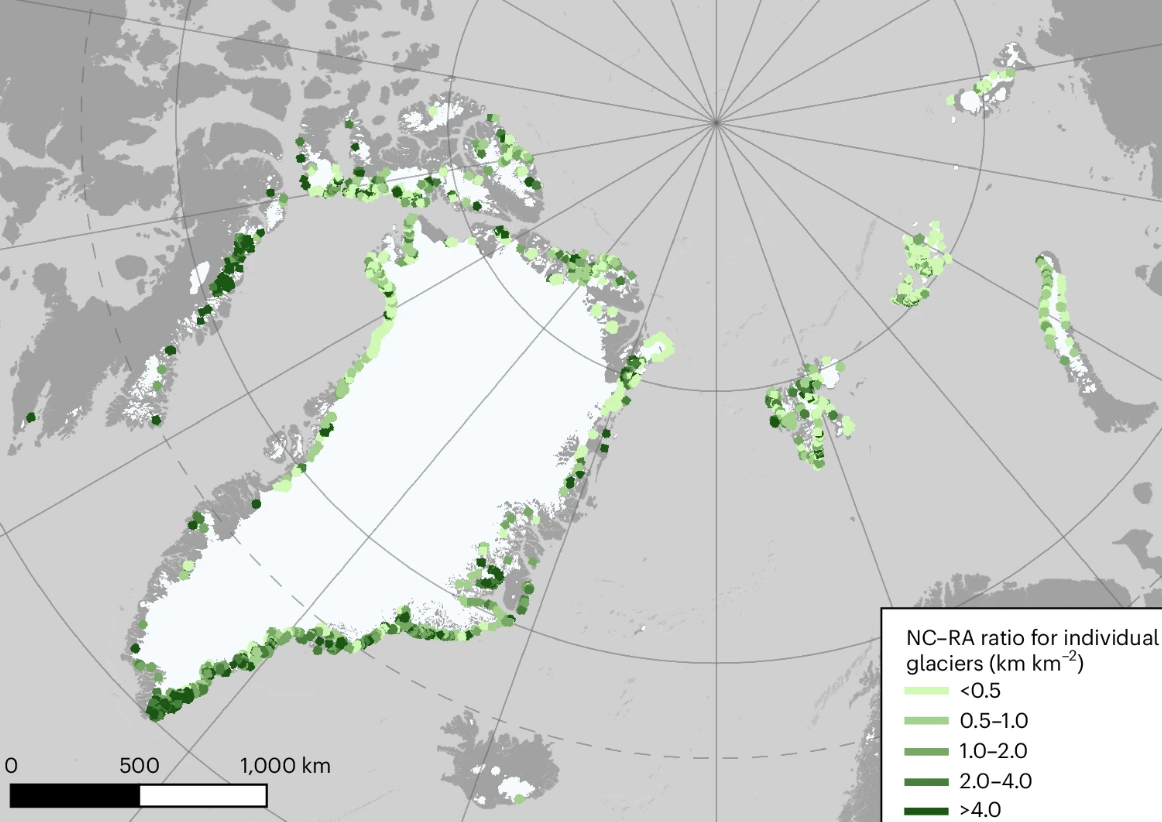Greenland has expanded its rocky coastline by approximately 1,620 kilometers (~1,000 miles) within just two decades. While countries typically gain new land through military conquests, territorial treaties, or land reclamation projects, Greenland’s expansion has occurred in a far more sobering way: the relentless melting of its glaciers.
ADVERTISEMENT
As a result of warming temperatures, glaciers on Greenland’s fringes have receded back into land, exposing thousands of kilometers of coastline that was previously hidden by ice.
An international team of scientists used satellite imagery to analyze changes to the Northern Hemisphere’s marine-terminating glaciers, which are ice masses that make contact with the ocean. They then worked out the length of the new coastline that has been exposed by glacial melting between 2000 and 2020.
They found around 2,466 kilometers of new coastline had been exposed within those two decades, up to 66 percent of which occurred in Greenland.
“Greenland contains the largest average glacier retreat area in the Arctic. The glacier with the longest new coastline, Zachariae Isstrom in northeast Greenland, is responsible for >81 km [50 miles] of new coastline, which is more than twice as much as any other glacier in the hemisphere. The majority of glaciers exposing the longest coastline are in Greenland with almost all of them attached to the ice sheet,” the study authors write.

Map of Greenland and other parts of the Arctic showing new coastline length and retreat area for the period 2000-2020 for individual glaciers.
Along with revealing more of the mainland, the glacial retreat also exposed 35 new islands larger than 0.5 square kilometers (0.19 square miles) during the period 2000–2020. Twenty-nine of the new islands are in Greenland, while a further six are in Svalbard and the Russian Arctic.
Thirteen of these islands have never appeared on maps before, including 12 in Greenland and one in the Russian Arctic. Interestingly, five of them had been mapped in the 1960s before advancing glaciers temporarily buried them under ice, only to reappear as the ice retreated in recent decades.
ADVERTISEMENT
The new study is a timely reminder of how climate change will continue to reshape Earth’s geography – and the geopolitical forces that seek to control it. Climate change is expected to expose new lands and resources, potentially leading to geopolitical tensions and conflicts over these areas. As Arctic ice melts, previously inaccessible regions rich in natural resources like oil, gas, and minerals become available, prompting nations to assert territorial claims and seek control over these assets.
This competition has recently become evident in the Arctic, where countries such as Russia, Canada, and the US are increasingly assertive. Indeed, one flashpoint is Greenland, which has recently drawn (unwelcome) attention from the Trump Administration, which has brazenly claimed that control of the Arctic territory is essential to US security interests.
The study is published in the journal Nature Climate Change.
Source Link: Greenland's Coastline Has Grown By 1,620 Kilometers In Two Decades – And Not For A Good Reason